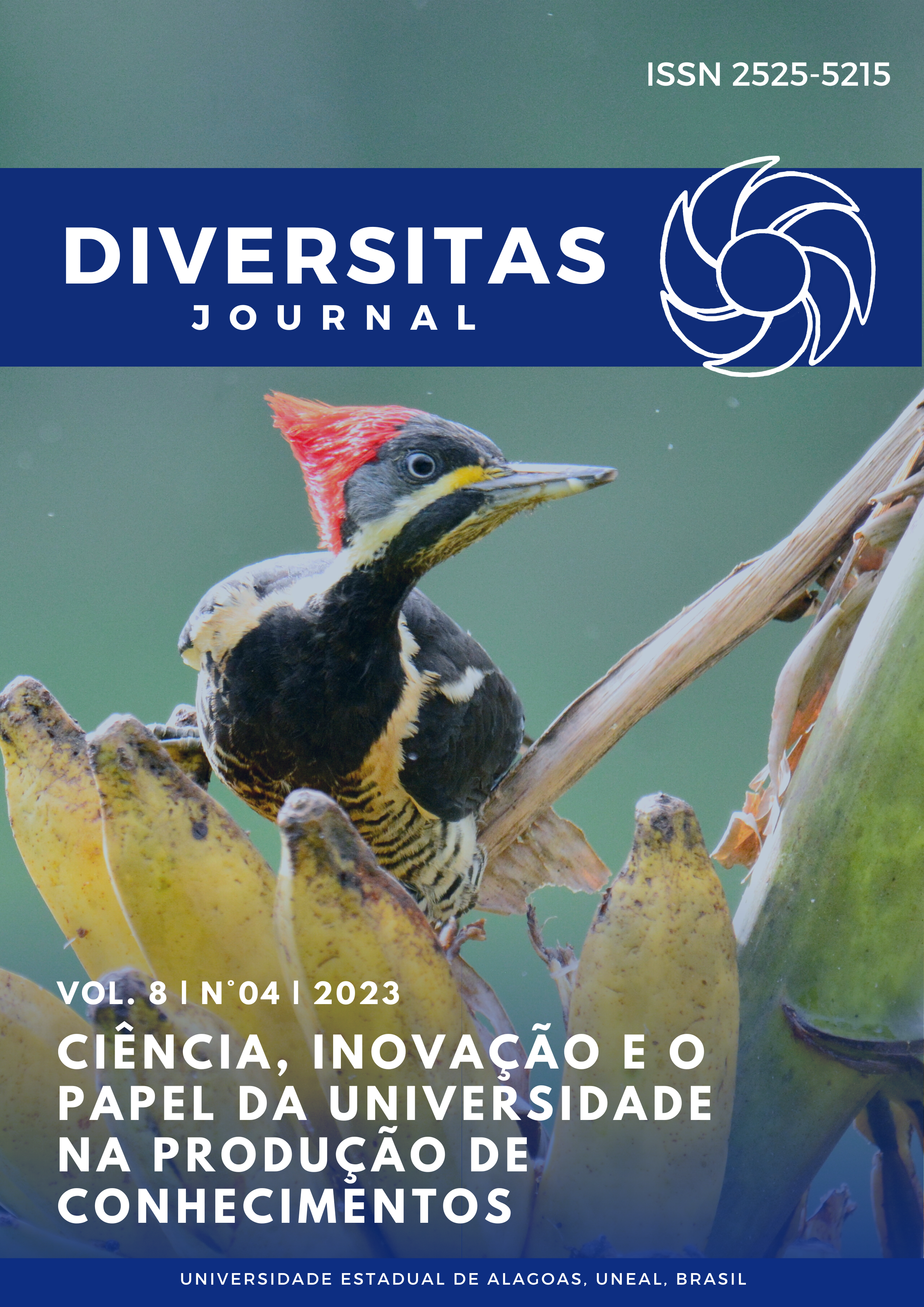Teste e avaliação de torrefação de biomassa usando casca de Pili
DOI:
https://doi.org/10.48017/dj.v8i4.2643Palavras-chave:
Biomass roasting furnace, Pili shell, Roasting meat, Biomass fuelResumo
O uso de cascas de pili como combustível em um forno de torrefação de biomassa para assar carne foi investigado neste estudo. Para estimar a capacidade das cascas de pili em assar carne, os pesquisadores usaram observação, experimentação, análise de dados e interpretação. Verificou-se que as cascas de pili como combustível são um bom substituto para a torrefação. As cascas de pili são mais eficazes do que um forno elétrico, de acordo com os pesquisadores. Mais pesquisas sobre as qualidades e componentes das cascas de nozes de pili são necessárias para estabelecer o tratamento necessário antes que possam ser utilizadas como combustível. O aumento da pressão tem um efeito nas métricas de torrefação, como rendimentos de massa, taxa de densificação de energia, rendimento de energia, consumo de energia do processo, análise aproximada, alto valor de aquecimento.
Métricas
Referências
Ahmad, R., Ilyas, H. N., Li, B., Sultan, M., Amjad, M., Aleem, M., Abbas, A., Imran, M. A., & Riaz, F. (2022, August 12). Current challenges and future prospect of biomass cooking and heating stoves in Asian countries. Frontiers. https://www.frontiersin.org/articles/10.3389/fenrg.2022.880064/full
Biomass fuels. (n.d.). https://enva.com/resource-recovery/energy/biomass-fuels
Boy et al. (2020). Fuel efficiency of an improved wood-burning stove in rural Guatemala: implications for health, environment and development. Energy Procedia
C. L'Orange et al. (2022). Influence of stove type and cooking pot temperature on particulate matter emissions from biomass cook stove
Enerpower. (2012, June 12). Biomass Explained. Enerpower. https://enerpower.ie/2012/06/12/biomass-explained/
Huboyo et al. (2021). Comparison between Jatrophacurcas seed stove and woodstove: performance and effect on indoor air quality
MacCarty et al. (2018). A laboratory comparison of the global warming impact of five major types of biomass cooking stoves
N. MacCarty et al. (2020). Fuel use and emissions performance of fifty cooking stoves in the laboratory and related benchmarks of performance
N. L. Panwar et al. (2018). Design and performance evaluation of a 5 kW producer gas stove. Biomass Bioenergy
Nonrenewableresources.(n.d.-b). https://education.nationalgeographic.org/resource/nonrenewable-resources/
Okino, J., Komakech, A. J., Wanyama, J., Ssegane, H., Olomo, E., & Omara, T. (2021, May 29). Performance characteristics of a cooking stove improved with sawdust as an insulation material. Journal of Renewable Energy. https://www.hindawi.com/journals/jre/2021/9969806/
Pham, L., & Dumandan, N. (2015). Philippine Pili: Composition of the lipid molecular species - researchgate. ResearchGate. https://www.researchgate.net/publication/285215963_Philippine_Pili_Composition_of_the_lipid_molecular_species
Still, K. (2022, May 7). Learning from the Three Stone Fire. Aprovecho. http://aprovecho.org/the-big-picture/learning-from-the-three-stone-fire/
Torretta, V., Mendoza, I. J. C., Portillo, M. a. G., & Conti, F. (2022). Are waste-based briquettes alternative fuels in developing countries? A critical review. Energy for Sustainable Development, 68, 220–241. https://doi.org/10.1016/j.esd.2022.03.013
V.M. Berrueta et al.(2018). Energy performance of wood-burning cook stoves in Michoacon, Mexico Renew.Energy
VNV. (2023, March 9). Cookstoves: An eco-friendly solution for sustainable cooking. VNV Advisory. https://vnvadvisory.com/cookstoves-an-eco-friendly-solution-for-sustainable-cooking/
Wikipedia contributors. (2023). Clay. Wikipedia.https://en.wikipedia.org/wiki/Clay Sriudom (2021). Thermal efficiency improvement and technology transfer of chimney stove for producing stove; Amphoe Bo Kluea, Nan Province
Yao, M. G. (2012). Pili (Canarium Ovatum Engl.) Nut Shell activated carbon: Surface modification, characterization and application for carbon dioxide capture. Animo
Zafar, S. (2021, December 14). Biomass Energy Potential in Philippines. BioEnergy Consult. https://www.bioenergyconsult.com/biomass-philippines/
Downloads
Publicado
Como Citar
Edição
Seção
Licença
Copyright (c) 2023 Jeffrey Cacho, Sherwin Reyes, Miguel Ramalho Santos, Joefil Jocson, Estrelita Bernardo

Este trabalho está licenciado sob uma licença Creative Commons Attribution 4.0 International License.
O periodico Diversitas Journal expressa que os artigos são de unica responsabilidade dos Autores, conhecedores da legislação Brasileira e internacional. Os artigos são revisados pelos pares e devem ter o cuidado de avisar da possível incidencia de plagiarismo. Contudo o plagio é uma ação incontestavel dos autores. A Diversitas Journal não publicará artigos com indicios de Plagiarismos. Artigos com plagios serão tratados em conformidade com os procedimentos de plagiarismo COPE.
A violação dos direitos autorais constitui crime, previsto no artigo 184, do Código Penal Brasileiro:
“Art. 184 Violar direitos de autor e os que lhe são conexos: Pena – detenção, de 3 (três) meses a 1 (um) ano, ou multa. § 1o Se a violação consistir em reprodução total ou parcial, com intuito de lucro direto ou indireto, por qualquer meio ou processo, de obra intelectual, interpretação, execução ou fonograma, sem autorização expressa do autor, do artista intérprete ou executante, do produtor, conforme o caso, ou de quem os represente: Pena – reclusão, de 2 (dois) a 4 (quatro) anos, e multa.”


















